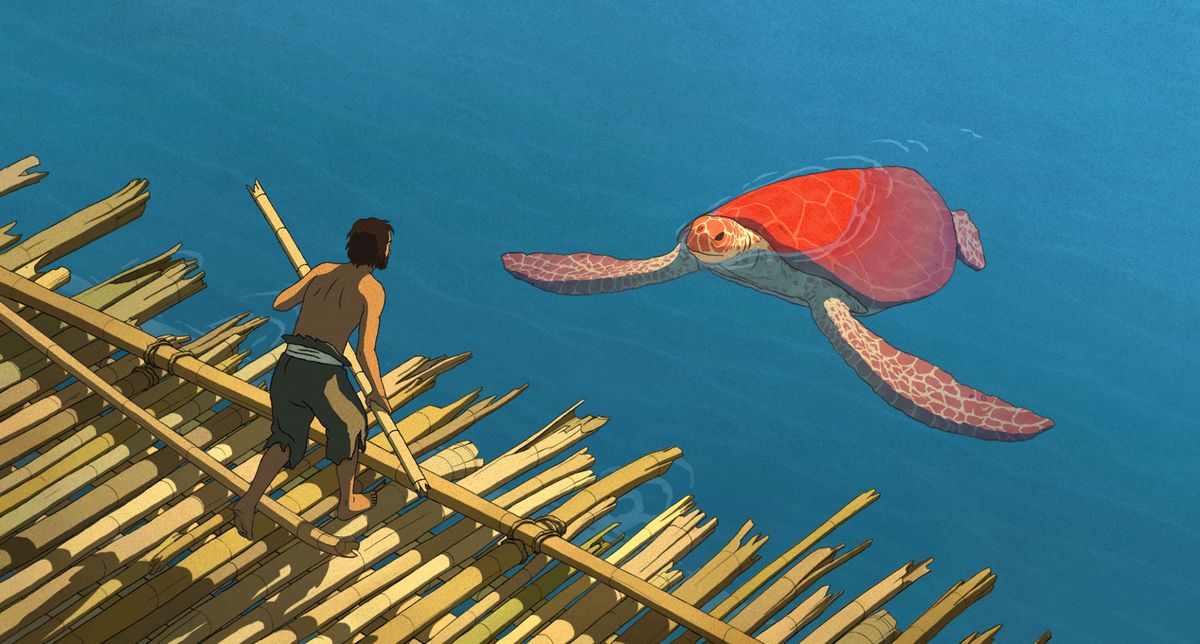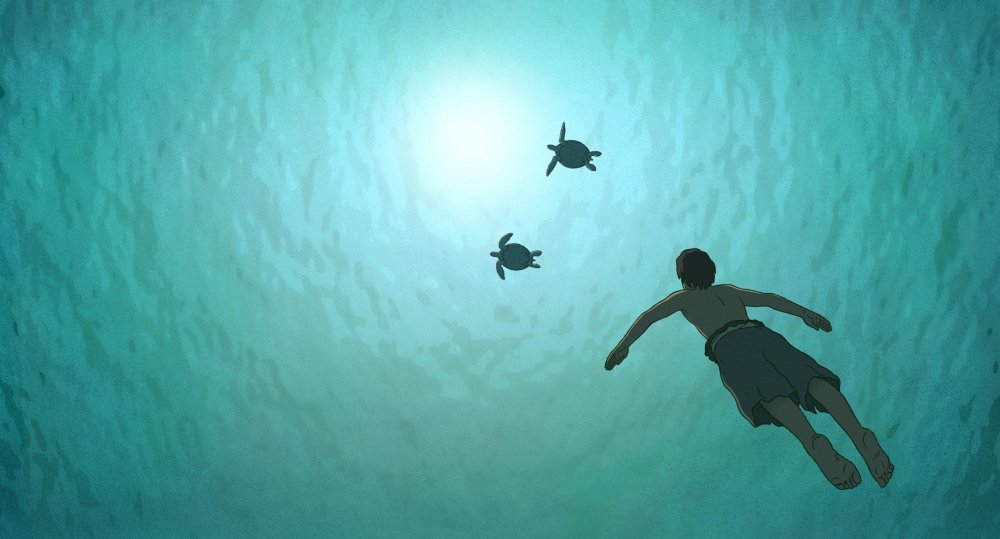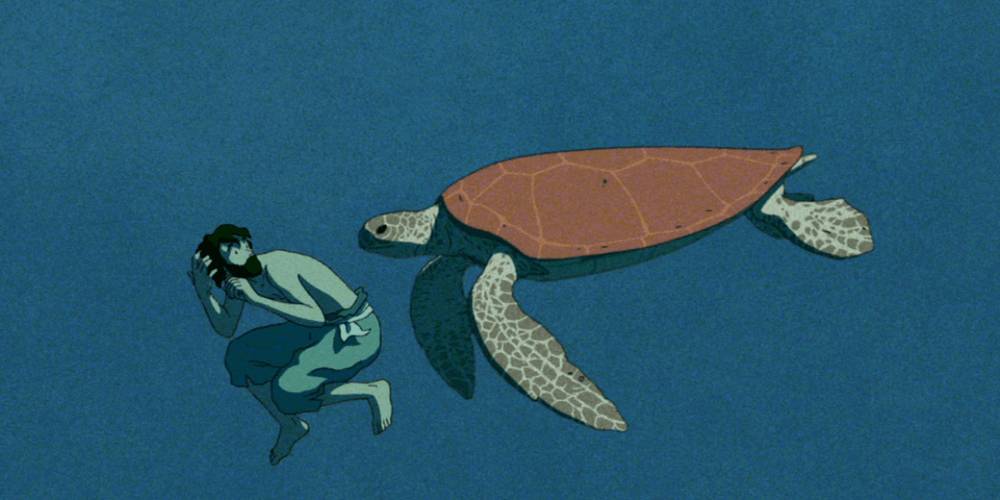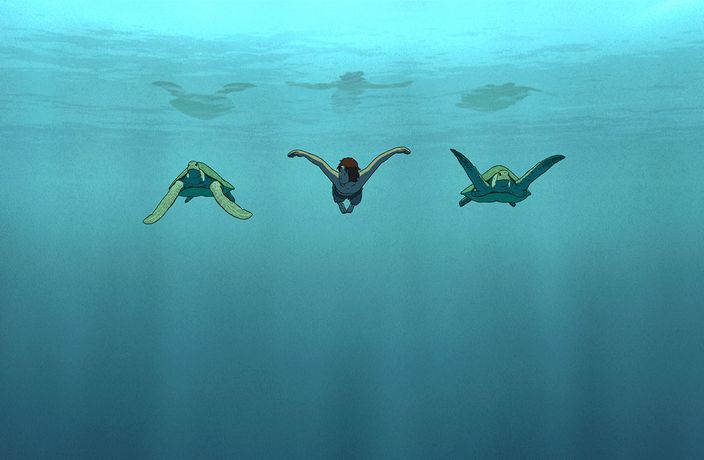After nearly a decade in the making, UK-based Dutch director Michaël Dudok de Wit stunned judges at the 2016 Cannes Film Festival with his first feature film, The Red Turtle. This eloquent film was also the first co-production for Studio Ghibli, the renowned Japanese animation studio, which has produced highly acclaimed anime for decades such as My Neighbor Totoro and Princess Mononoke. The joint effort from these two Oscar-winning powerhouses is a dialogue-free, minimalist allegory infused with eastern aesthetics.

We open with a shipwrecked man struggling to stay afloat amidst a furious storm. In the wake of being washed up onto a deserted island, our nameless castaway finds himself in complete isolation among the unexplored nature and vast bamboo forest. Alone and desperate, he attempts to build numerous rafts, using the bamboo poles, in order to sail away. However, each escape is thwarted and his raft is savaged by a mysterious sea beast. As he finally confronts the beast, the red turtle, an unexpected relationship and story unfolds.
The storyline follows our nameless protagonist through the major stages of his life. In truth, it is a remarkably simple story, told as an ancient tale slowly unveiled by a wise elder. As mythological as it might seem, we find the story and the characters believable. The pace of the film is sedate, which allows the audience to take their time admiring the sublime art work of each frame, and experience the emotion of each scene. The director uses this thoughtful amount of time for a gradual and intricate buildup that allows the story to illustrate the complex emotions of life, without uttering a single word.
Known for persisting in the traditional hand-drawn animation techniques, the team at Studio Ghibli composed a spellbinding natural surrounding with grainy charcoal-drawn graphics and dreamy rich-hued rendering. Although the character design is minimalist, with black-dot-eyes and sketch-like body figures, each character’s expression is painstakingly detailed.
The symphonic score takes us on a journey from the playful scattering of crabs, graceful swimming turtles, and imaginary bridge that our character soars above, to the last scene where the red turtle returns to sea. Each scene’s emotion is conveyed through a solo instrumental, surging symphony or a resonating harmony.
While many of today’s anime producers seem to be making their visuals busier and plots more complicated and fast-paced, the talents behind The Red Turtle decided to return to the basics; simplistic yet beautiful, telling a tale that is true to life itself. Some might comment that the film is too profound and is crossing the boundaries of pretentiousness. With no dialogue, it may also lose its appeal to children and the Hollywood-spoiled audience. However, we must respectfully disagree. The Red Turtle is a film about life itself. When everything material is taken away, how do you see the meaning and values of life? How do you find happiness from within? A film that can convey this doesn’t need verbal explanation. Without dialogue, the audience is free to interpret the film and experience the emotion through the inspiring and beautiful animation of a humble man’s life – in a refreshingly non-commercial approach, the viewer is left reflecting on their own values.
While some may believe that younger children will find a CGI technology-driven, colorful and dramatic film more appealing, the magic that occurs when watching The Red Turtle is sure to captivate a curious mind of any age. This animated film can be a nostalgic and peaceful alternative for the whole family. A classic for the future.
The Red Turtle is available on DVD.


















